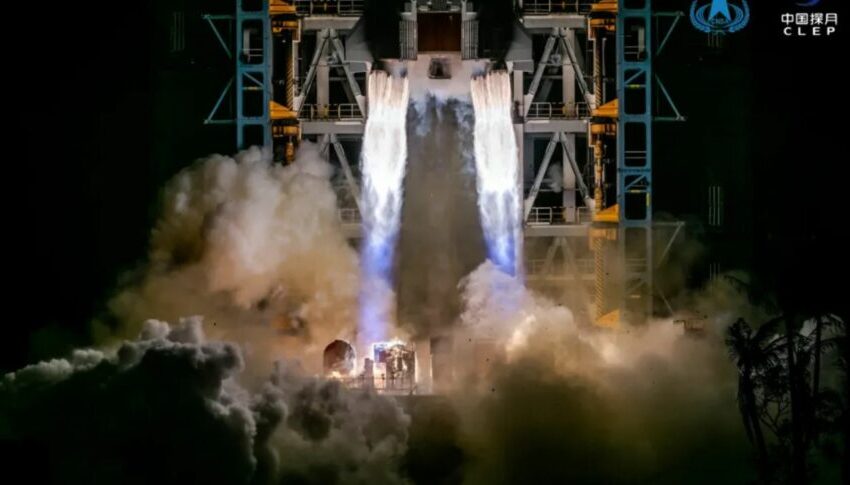China could shift to fully reusable super heavy-launcher in wake of Starship

China’s launch vehicle makers appear to be designing a fully reusable version of the Long March 9 super heavy-lift rocket needed for future megaprojects.
The emergence of plans for new reusable methane-liquid oxygen launch vehicles to be ready for 2035 suggests that China is looking to make significant changes to its space transportation plans.
China’s government last year signaled approval for the continued development of a super heavy-lift launcher, known as the Long March 9. The long-planned, expendable launcher is planned to be operational by 2030, in time to facilitate Chinese megaprojects including the International Lunar Research Center.
The giant rocket will consist of three stages and four side boosters, with the first stage and boosters using a kerosene and liquid oxygen propellant mix.
However, a new concept for a fully reusable two-stage launcher has now been presented in a recent public lecture by Long Lehao, a veteran chief designer of the Long March rocket series.
The first stage of the 10.6-meter-diameter launcher would be powered by 26 clustered 200-ton-thrust methalox engines. It would be capable of carrying 150 tons of payload to Low Earth orbit, 65 tons to geosynchronous transfer orbit, or 50 tons to trans-lunar injection.
Long, a senior official who frequently presented updates on China’s space activities, revealed that the new launches are to be ready by 2035, and likely developed in parallel to the expendable version.
The largest variant, apparently including a third stage, would have a length of 110 meters and a takeoff mass of 4,122 tons.
The concepts would be a dramatic departure from both the expendable model of the Long March 9 and a version with a reusable first stage presented last year, with fully reusability now a goal. The frequent change in concepts however also suggests China’s plans are somewhat in flux.
The presentation, made in July, comes shortly ahead of first orbital test flights for the expendable Space Launch System and SpaceX’s fully reusable Starship.
Methane-liquid oxygen offers advantages in performance and reduces issues of soot formation and coking for purposes of reusability. The plans follow the trend of SpaceX, Blue Origin and United Launch Alliance in switching to the fuel.
It also follows a smaller two-stage methane-liquid oxygen launcher concept, apparently drawing on SpaceX’s Starship, presented by Wang Xiaojun, president of the China Academy of Launch Vehicle Technology (CALT).
The apparent switch to methalox appears sudden. China’s propulsion institutes, under the state-owned conglomerate the China Aerospace Science and Technology Corporation (CASC), have however long been working on methane engines, making a change of plans somewhat feasible.
A smaller five-meter-diameter reusable rocket presented by Long could potentially be intended to replace a number of aging hypergolic rockets, as well as more recent kerosene-fueled Long March rockets which have become operational over the last decade.
Chinese commercial launch companies Landspace and iSpace have been developing methane-liquid oxygen launchers in recent years, possibly with help of military-civil fusion national strategy which facilitates transfer of restricted technologies.
Landspace is set to attempt its first launch on the methalox Zhuque_2 in the near future from Jiuquan spaceport. Competitor iSpace is also preparing to conduct hop tests with a methalox first stage test article for its reusable Hyperbola-2 rocket at Jiuquan.


